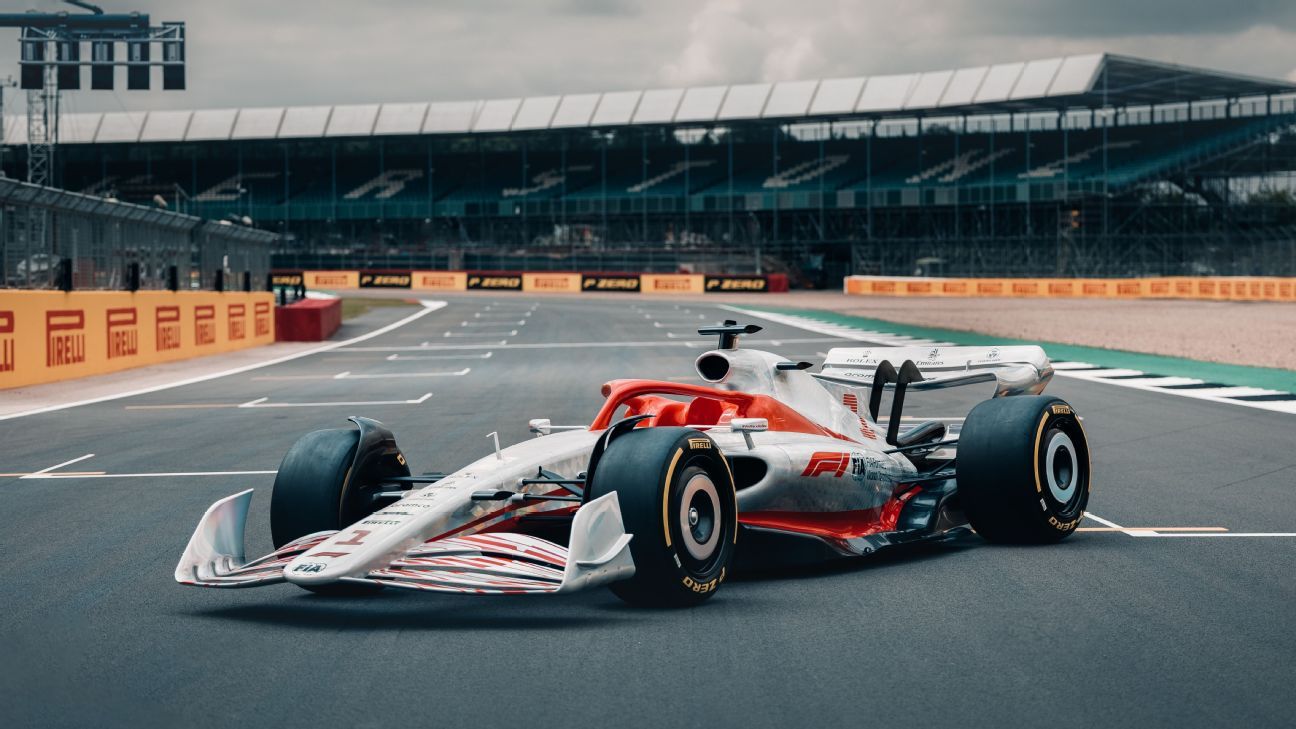SILVERSTONE, U.K. — Formula One has launched its vision of what the next generation of race cars will look like.
In an event at the Silverstone circuit ahead of Sunday’s British Grand Prix, F1 took the covers off a concept car based around a new set of regulations being introduced next year.
Some details of the actual cars being designed by the teams for next year may look different, but the concept car unveiled on Thursday gives a general impression of how the new cars will look.
The regulations for next year were initially due to be introduced in 2021 but were delayed due to concerns over rising costs for the teams during the pandemic.
All aspects of the new technical regulations are aimed at creating closer racing: both in a wheel-to-wheel sense and in terms of the spread of competition. Current F1 cars only retain 55 percent of their total downforce once they are within a car’s length of the car in front, dramatically reducing their ability to remain close through high-speed corners.
Simulations of the new design suggest that number will increase to 86 percent in 2021, increasing the chances of close racing from 2021 onwards.
“It feels like a very long time ago the FIA officially unveiled the regulations for the future of the sport, but after the one-year delay due to the pandemic it’s only 170 days to go until the start of 2022 when we will see the next generation of Formula 1 cars take to the track,” F1 motorsport director Ross Brawn said.
“There is huge excitement ahead of this new era, and while 2021 has been a great battle we still have cars struggling to follow each other during the race. “The regulations for 2022 will address this problem and create an opportunity for closer battles and more wheel-to-wheel racing. The combined effect of the new aerodynamic regulations and financial rules, in the form of the cost cap, will create the conditions for a more balanced championship and for the gaps across the grid to close.”
Nikolas Tombazis, single-seater technical director at the FIA, added: “2022 will herald a new era for the FIA Formula One World Championship, with the introduction of one of the biggest changes in regulations in the history of the sport.
“The FIA has led a superb collaborative effort with Formula One and the teams to identify the areas we feel will have the biggest impact on the ability of the cars to race each other closely on the track, and in combination with the financial regulations that are already in place, these new technical regulations should have a great positive impact on the spectacle but also on the sustainability of our sport.”
